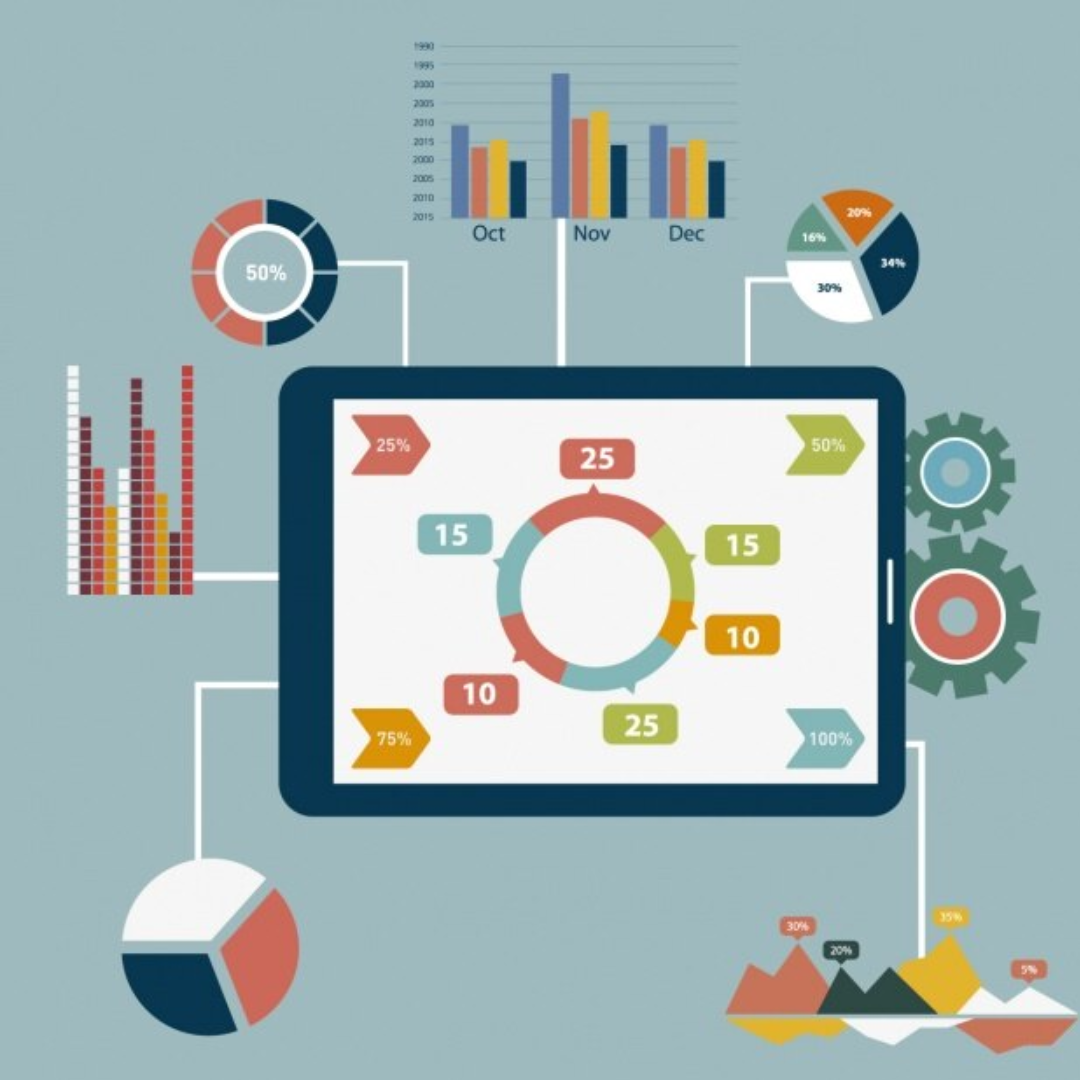Top 20 Data Science Tools & Trends for 2024: AI Data Analytics in the Modern Data Stack
As we look ahead to 2024, the field of data science is experiencing rapid evolution with emerging technologies shaping the landscape. From the role of AI in revolutionizing data analytics to the impact of data mesh on data strategy, there are several key trends driving the industry forward.
What are the key trends in data science for 2024?
Predicting specific trends for a future year like 2024 is speculative, but based on the direction of advancements in data science up to my last update in January 2022, several key areas were gaining momentum. Here's a speculative outlook on potential trends in data science for 2024:
-
AI Explainability and Transparency: As AI systems become more pervasive, there's a growing demand for transparency and explainability in AI models. Techniques to interpret and explain AI decisions will likely continue to evolve, driven by both regulatory requirements and the need for trust in AI systems.
-
Responsible AI and Ethics: Concerns around bias, fairness, and ethical use of data and AI are likely to remain at the forefront, especially in corporate data policies and data science applications. Companies will increasingly prioritize building AI systems that are fair, transparent, and accountable, with a focus on mitigating bias and ensuring ethical decision-making.
-
Edge Computing and IoT: With the proliferation of IoT devices generating massive amounts of data at the edge of networks, there will be an increasing need for data science techniques tailored for edge computing environments. Real-time analytics, anomaly detection, and efficient data processing at the edge will be critical for various applications, from smart cities to industrial IoT.
-
Federated Learning, as a method allowing for analytics and data science to be applied while maintaining data privacy, is becoming increasingly important.: Privacy concerns and regulatory requirements will continue to drive interest in federated learning, a technique that allows for model training across decentralized data sources without sharing raw data. Federated learning enables organizations to collaborate on model training while maintaining data privacy and security, making it particularly relevant in sectors like healthcare and finance.
-
AutoML and Model Compression: Automation in machine learning model development (AutoML) will continue to advance, making it easier for non-experts to build and deploy AI models. Additionally, there will be a focus on model compression techniques to reduce the size and computational resources required for deploying models on edge devices and resource-constrained environments.
-
Graph Analytics: With the increasing interconnectedness of data in various domains such as social networks, cybersecurity, and recommendation systems, graph analytics will continue to gain importance. Techniques for analyzing and extracting insights from graph-structured data will see further development and adoption.
-
Natural Language Processing (NLP) Advancements: NLP models will continue to advance, with improvements in understanding context, generating more human-like responses, and supporting more languages. Applications of NLP, such as chatbots, virtual assistants, and sentiment analysis, will become more sophisticated.
-
Data Governance and Compliance: As data privacy regulations become more stringent globally (such as GDPR, CCPA, etc.), organizations will invest more in robust data governance frameworks and compliance measures. Data lineage, data cataloging, and data quality management will be key focus areas, crucial for maintaining the integrity of corporate data and ensuring access to the best data.
These are speculative predictions and the actual trends in 2024 may vary based on technological advancements, regulatory changes, and other unforeseen factors.
Emerging technologies shaping the data science landscape
2024 will be the year of significant advancements in data science, driven by emerging technologies that are reshaping the landscape of data analytics. From generative AI to modern data platforms, the tools available to data scientists are becoming more powerful and sophisticated.
Role of AI in revolutionizing data analytics
The integration of AI into data analytics processes is set to revolutionize how data is analyzed and interpreted, highlighting the merging paths of analytics and data science. AI-driven data products are enhancing user experience, while optimizing data engineering processes for improved efficiency and accuracy, demonstrating how access to data and the right data can significantly impact outcomes.
Impact of data mesh on data strategy
Data mesh, a decentralized approach to data architecture, is transforming how organizations think about data strategy. By leveraging data from various sources and applying machine learning algorithms, companies can unlock valuable insights and drive informed decisions.
How is big data influencing data analytics in 2024?
Big data continues to significantly influence data analytics in 2024, shaping the field in several key ways:
1. Increased Volume, Variety, and Velocity: The amount of data generated globally continues to explode, encompassing diverse formats like sensor data, social media interactions, and financial transactions. This necessitates advancements in data storage, processing, and analysis techniques.
2. Cloud-based Solutions: Cloud computing plays a crucial role in managing and analyzing big data due to its scalability, cost-effectiveness, and accessibility. Cloud platforms offer powerful tools and resources for data storage, processing, and analytics.
3. Advanced Analytics: To extract meaningful insights from vast and complex datasets, data analysts are increasingly relying on sophisticated techniques like machine learning, deep learning, and artificial intelligence (AI). These methods enable advanced pattern recognition, anomaly detection, and predictive modeling.
4. Focus on Data Privacy and Security: As the volume and sensitivity of data increase, concerns around data privacy and security become paramount. Regulations like GDPR and CCPA are prompting organizations to implement stricter data governance practices and invest in secure data processing methods like federated learning.
5. Integration with the Internet of Things (IoT): The proliferation of IoT devices generates massive amounts of data, providing valuable insights into various aspects, from industrial operations to environmental monitoring, and underscores the importance of analytics and data science in leveraging this data. Data analytics plays a crucial role in extracting meaningful information from these vast streams of data.
6. Evolving Role of Data Scientists: This role is increasingly requiring a blend of expertise in analytics and data science, along with the ability to work with various data from multiple sources. With the growing complexity of data and analytics tools, the role of data scientists is evolving. They are increasingly required to possess not only technical skills but also strong business acumen and communication abilities to bridge the gap between data and actionable insights.
In conclusion, big data continues to be a transformative force in data analytics in 2024, driving innovation in areas like storage, processing, and analysis methods, particularly in data centers and data warehouses. As the volume, variety, and velocity of data grow, organizations must adapt their strategies and embrace advanced tools and techniques to unlock the full potential of big data and gain valuable insights for informed decision-making.
Utilizing big data for predictive analytics
In 2024, the sheer amount of data available is allowing data scientists to utilize big data for predictive analytics. By analyzing vast data sets, organizations can forecast trends and make data-driven decisions with greater accuracy.
Challenges and opportunities in big data management
While big data presents significant opportunities, managing and analyzing such large volumes of data also comes with challenges. Data practitioners need effective data management strategies to ensure data quality and extract meaningful insights from raw, unstructured data.
Integration of machine learning into big data analysis
The integration of machine learning algorithms into big data analysis is enabling more advanced analytics capabilities. By leveraging machine learning models, data scientists can extract valuable insights from complex data sets and uncover patterns that were previously undiscovered.
What are the top tools for data analysts in 2024?
While the specific needs of a data analyst may vary depending on their field and project, several top tools stand out in 2024:
Data Visualization:
- Tableau: A powerful and user-friendly tool for creating interactive dashboards and visualizations, allowing analysts to communicate insights effectively.
- Microsoft Power BI: Another popular option, offering strong integration with Microsoft products and a wide range of visualization capabilities.
Programming Languages and Libraries:
- Python: A versatile language widely used in data science, with libraries like pandas and NumPy offering powerful data manipulation and analysis functionalities.
- R: Primarily focused on statistical computing and graphics, R provides robust tools for statistical analysis, modeling, and data visualization.
Other Tools:
- Apache Spark: A distributed processing framework enabling efficient handling of large datasets across clusters of computers.
- Jupyter Notebook: An interactive environment for developing and documenting code, data exploration, and visualization, popular amongst data scientists.
- Google Cloud AutoML: An automated machine learning (AutoML) platform that simplifies model creation for those with less coding experience.
Additionally, considering the growing influence of AI and automation, familiarity with tools like KNIME and Streamlit can be beneficial for data analysts.
It's important to note that this list is not exhaustive, and the "best" tool ultimately depends on the specific needs and project requirements of the data analyst.
Data visualization tools for effective data representation
For data analysts in 2024, data visualization tools play a crucial role in representing complex data sets in a visually engaging manner. These tools help analysts communicate insights effectively and make data-driven decisions based on clear and intuitive visualizations.
Data platforms for seamless data management
To manage the increasing volume and variety of data, data analysts rely on modern data platforms that streamline data management processes. These platforms enable seamless integration of data from various sources and provide a unified view for better decision-making.
Innovative data analytics tools for advanced insights
In 2024, data analysts have access to innovative tools that offer advanced analytics capabilities. By leveraging these tools, analysts can uncover deeper insights, predict future trends, and optimize business processes based on data-driven insights. Including data science techniques, these approaches can significantly enhance analytics and data science capabilities.
How is AI integrated into the modern data stack for analytics?
AI is deeply integrated into the modern data stack for analytics, playing a crucial role in enhancing data processing, analysis, and decision-making capabilities. Here's how AI is typically integrated into the modern data stack:
-
Data Collection and Ingestion: AI techniques are used to automate data collection processes from various sources, including structured databases, unstructured sources like text documents and images, and streaming data from IoT devices. Natural Language Processing (NLP) and computer vision algorithms can parse and extract relevant information from text and image sources, while AI-driven tools help with data normalization and transformation tasks during ingestion.
-
Data Preparation and Cleansing: AI-powered tools and techniques streamline the process of data preparation and cleansing by automating tasks such as data deduplication, outlier detection, and missing value imputation. Machine learning algorithms can learn patterns from historical data and suggest data cleaning strategies, reducing the time and effort required for data wrangling tasks.
-
Data Storage and Management: AI is used to optimize data storage and management within the data stack. Automated tiering and data lifecycle management algorithms help organizations efficiently store and retrieve data based on its value and usage patterns. AI-driven data governance tools enforce data quality, security, and compliance policies across the data lifecycle.
-
Data Analysis and Insights Generation: AI techniques, including machine learning, deep learning, and predictive analytics, are employed to analyze large volumes of data and uncover actionable insights. This represents a convergence of analytics and data science practices. These techniques can identify patterns, trends, and correlations within the data that may not be apparent through traditional analytics methods. AI-driven analytics platforms provide advanced visualization tools and interactive dashboards for exploring and communicating insights effectively.
-
Personalization and Recommendation Systems: AI is utilized to power personalization and recommendation systems that deliver tailored experiences to users based on their preferences and behaviors. These systems analyze user data in real-time to make personalized recommendations for products, content, or services, enhancing customer engagement and satisfaction.
-
Automated Decision-Making: AI algorithms enable automated decision-making processes by learning from historical data and making predictions or recommendations based on current inputs. In sectors such as finance, healthcare, and manufacturing, AI-driven decision support systems assist human decision-makers by providing insights and recommendations for optimal courses of action.
-
Continuous Learning and Optimization: AI algorithms support continuous learning and optimization within the data stack by adapting to changing data patterns and feedback over time. Techniques like reinforcement learning enable systems to improve performance iteratively and autonomously, leading to more accurate predictions and better decision outcomes.
AI-driven data products enhancing user experience
The integration of AI into the modern data stack is revolutionizing how data products are developed and deployed. AI-driven applications enhance user experience by personalizing recommendations, improving search functionality, and automating decision-making processes.
Role of AI in optimizing data engineering processes
AI plays a crucial role in optimizing data engineering processes by automating data pipelines, cleansing and transforming data, and ensuring data quality. With AI-powered tools, data teams can streamline data integration and processing workflows for faster and more accurate results.
Software and tools leveraging AI for improved data quality
AI-powered software and tools are increasingly being used to improve data quality by identifying and correcting errors, detecting anomalies, and enhancing data governance practices. By leveraging AI for data quality management, organizations can ensure the reliability and accuracy of their data assets.
What are the key considerations for data teams in 2024?
As the data landscape continues to evolve, several key considerations are crucial for data teams in 2024:
1. Data Ethics and Responsibility:
- Building trust: Upholding ethical principles and ensuring data is used responsibly are critical. This includes addressing potential biases in data and algorithms, obtaining appropriate consent for data collection, and being transparent about data usage.
2. Augmented Data Management:
- Efficiency and accuracy: Tools like automated data pipelines, data quality checks, and data lineage tracing can streamline data management, improving efficiency and accuracy.
3. Real-time Data Processing:
- Actionable insights: Being able to process and analyze data in real-time allows for near-instantaneous decision making and proactive responses to changing situations.
4. DataOps Adoption:
- Collaboration and efficiency: Integrating DataOps principles fosters collaboration between data teams, developers, and other stakeholders, leading to a more efficient and streamlined data lifecycle.
5. Privacy and Compliance:
- Staying compliant: Navigating the ever-changing regulatory landscape regarding data privacy (like GDPR and CCPA) is crucial. Data teams need to stay updated on regulations and implement robust data governance practices to ensure compliance.
6. Cloud-Native Infrastructure:
- Scalability and cost-effectiveness: Utilizing cloud-based data platforms offers scalability, flexibility, and cost-effectiveness to handle growing data volumes and processing demands.
7. Expanding Data Literacy:
- Democratizing data: Investing in programs and training to equip non-technical stakeholders with basic data understanding can foster data-driven decision making across the organization.
8. Graph Analytics and Databases:
- Connecting the dots: Graph databases and analytics tools are becoming increasingly valuable for handling interconnected data and uncovering complex relationships within datasets, representing a key area in analytics and data science.
9. Exploring Quantum Computing:
- Future potential: While still in its early stages, quantum computing holds immense potential for tackling complex data problems beyond the capabilities of traditional computers. Staying informed about advancements in this field can be beneficial for future-proofing data strategies.
10. Enhancing Data Visualization:
- Effective communication: Creating clear, concise, and visually appealing data visualizations is essential for effectively communicating insights to both technical and non-technical audiences.
By prioritizing these considerations, data teams can stay ahead of the curve, effectively manage and analyze data, and unlock its full potential to drive informed decision-making and organizational success in 2024 and beyond.
Embracing machine data for actionable insights
In 2024, data teams must embrace machine data to extract actionable insights from diverse data sources. By analyzing machine-generated data, organizations can uncover patterns, detect anomalies, and drive operational efficiency through data-driven decision-making.
Data quality management strategies for successful analytics
Successful analytics in 2024 rely on effective data quality management strategies that ensure the accuracy, completeness, and consistency of data. Data teams need to establish data governance practices, implement data observability tools, and prioritize data security to achieve reliable and trustworthy data insights.
Enhancing data applications with modern data sources
To stay ahead in 2024, data teams need to enhance their data applications with modern data sources that provide real-time, relevant insights, ensuring they're working with the right data for their needs. By integrating diverse data sets and leveraging advanced analytics techniques, organizations can drive innovation, improve customer experiences, and gain a competitive edge in the market.





